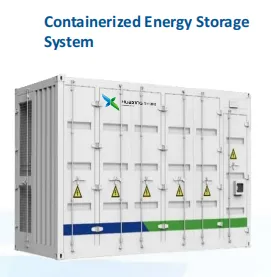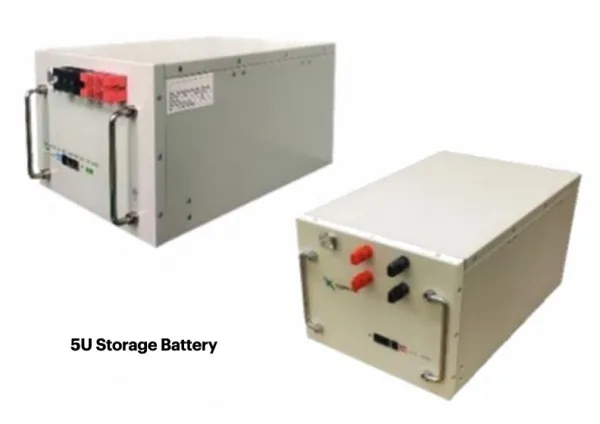Performance of Energy Storage Batteries in Extreme Environments
Energy storage batteries are the backbone of modern renewable energy systems, electric vehicles, and backup power solutions. Their reliability in everyday conditions is well-documented, but when faced with extreme environments—scorching deserts, freezing tundras, high-altitude regions, or areas prone to humidity and vibration—their performance can degrade significantly. Understanding how energy storage batteries behave under these stressors is critical for industries ranging from renewable energy to aerospace, where consistent power delivery can mean the difference between operational success and failure. Let’s delve into the challenges energy storage batteries face in extreme environments and the innovations improving their resilience.
High-Temperature Environments: Balancing Heat and Efficiency
High temperatures—common in desert solar farms, industrial facilities, or tropical climates—pose one of the most significant threats to energy storage batteries. Most batteries, especially lithium-ion variants, operate optimally between 20°C and 25°C. When temperatures rise above 35°C, chemical reactions within the battery accelerate, leading to several issues:
Capacity Loss: Heat causes the electrolyte to degrade, reducing the battery’s ability to hold a charge. In lithium-ion energy storage batteries, for example, exposure to 45°C for prolonged periods can reduce capacity by 20% within a year—far faster than the 5–10% annual loss under normal conditions.
Safety Risks: Elevated temperatures increase the risk of thermal runaway, a chain reaction where the battery overheats, potentially leading to fires or explosions. This is particularly concerning for large-scale energy storage systems, where a single battery failure can trigger cascading issues.
Reduced Lifespan: The accelerated chemical activity shortens the battery’s cycle life (the number of charge-discharge cycles it can endure). A battery designed to last 10,000 cycles at 25°C might only survive 5,000 cycles at 40°C.
To mitigate these risks, manufacturers are developing heat-resistant energy storage batteries. Innovations include using ceramic-coated separators to prevent short circuits, electrolytes with higher thermal stability, and integrated cooling systems. For instance, some utility-scale energy storage batteries now feature liquid cooling loops that maintain temperatures within the optimal range, even in 50°C desert conditions. These advancements not only preserve performance but also extend the battery’s operational life in hot climates.
Low-Temperature Environments: Overcoming Cold-Related Degradation
Cold environments—such as polar regions, high-altitude areas, or winter climates—present a different set of challenges for energy storage batteries. At temperatures below 0°C, the electrolyte becomes viscous, slowing ion movement between the anode and cathode. This leads to:
Reduced Power Output: The battery struggles to deliver high currents, making it less effective for applications requiring sudden bursts of power, such as starting electric vehicles or supporting grid fluctuations.
Capacity Reduction: In freezing conditions, lithium-ion energy storage batteries can lose 30–50% of their rated capacity. For example, a battery that powers a remote weather station might fail to operate overnight in sub-zero temperatures, compromising data collection.
Charging Limitations: Cold temperatures make charging inefficient and risky. Attempting to charge a frozen battery can cause lithium plating—where lithium ions deposit on the anode instead of embedding in it—permanently damaging the cell.

To address these issues, engineers are designing energy storage batteries with cold-tolerant electrolytes, such as those containing additives that lower the freezing point. Heated battery management systems (BMS) are another solution: these systems warm the battery to a functional temperature (around 10°C) before use, ensuring reliable performance. In electric vehicles, for instance, BMS activates when the car is turned on in cold weather, allowing the battery to reach optimal operating conditions within minutes. For off-grid energy storage in cold regions, hybrid systems that combine batteries with thermal storage (e.g., phase-change materials) are proving effective, as they reduce the battery’s workload in extreme cold.
Humidity and Corrosion: Protecting Internal Components
High humidity and exposure to moisture are particularly damaging to energy storage batteries, especially those used in marine environments, coastal areas, or outdoor installations with poor weather protection. Moisture can seep into battery enclosures, causing:
Corrosion: Metal components, such as terminals and current collectors, are prone to rust, increasing internal resistance and reducing conductivity. This can lead to voltage drops and uneven charging across battery cells.
Short Circuits: Water ingress can create unintended electrical paths between cells, triggering short circuits that damage the battery or pose safety hazards.
Electrolyte Dilution: In flooded lead-acid batteries, excessive moisture can dilute the electrolyte, weakening its ability to facilitate ion flow.
Manufacturers are combating these issues by improving battery sealing and enclosure design. Modern energy storage batteries often feature IP67 or IP68 ratings, indicating they are dust-tight and water-resistant for extended periods. For marine applications, where saltwater exposure is a risk, batteries are coated with anti-corrosive materials, such as nickel plating or specialized polymers. Additionally, advanced BMS can detect moisture-related issues (e.g., increased resistance) and alert operators to take corrective action, preventing catastrophic failures.
Vibration and Mechanical Stress: Ensuring Structural Integrity
Energy storage batteries in mobile applications—such as electric vehicles, drones, or portable generators—face constant vibration and mechanical stress. Over time, this can:
Loosen Connections: Vibrations can loosen internal wiring or terminal connections, causing intermittent power loss or increased resistance.
Damage Cell Structures: In lithium-ion batteries, repeated shaking can disrupt the separator between the anode and cathode, increasing the risk of short circuits.
Compromise Seals: Mechanical stress can break the seals that protect the battery from moisture and dust, exacerbating other environmental issues.
To enhance durability, energy storage batteries for high-vibration environments undergo rigorous testing, such as MIL-STD-883H (military standards for mechanical shock and vibration). Design improvements include flexible wiring harnesses, shock-absorbing materials (e.g., rubber gaskets), and reinforced cell casings. In automotive energy storage systems, batteries are mounted on shock-isolating brackets that absorb road vibrations, while in drones, lightweight yet sturdy enclosures protect cells during flight. These measures ensure the battery maintains structural integrity, even in the most dynamic environments.
FAQ: Energy Storage Batteries in Extreme Environments
How do energy storage batteries perform in both high and low temperatures?
Most batteries struggle in extreme temperatures, but advanced designs with thermal management systems (heaters or coolers) and specialized electrolytes can operate reliably in ranges from -40°C to 60°C, though capacity may still be reduced at the extremes.
Can energy storage batteries be used in marine environments?
Yes, but they require waterproof enclosures, anti-corrosive coatings, and sealed connectors to resist saltwater and humidity. Lithium iron phosphate (LiFePO4) batteries are often preferred for marine use due to their chemical stability.
What is the impact of altitude on energy storage battery performance?
High altitudes (above 2,000 meters) reduce air pressure, which can affect heat dissipation—batteries may overheat more easily. Enclosures with enhanced ventilation or active cooling systems are recommended for high-altitude installations.
How does vibration affect the lifespan of energy storage batteries?
Prolonged vibration can reduce lifespan by 20–30% if not addressed. Batteries designed for high-vibration environments (e.g., those meeting ISO 16750 standards) have reinforced components that extend their operational life.
Are there energy storage batteries specifically designed for extreme environments?
Yes, specialized models exist, such as “extreme temperature lithium-ion batteries” for polar or desert use, and “ruggedized batteries” for military or off-road applications. These often feature advanced BMS, durable casings, and tailored electrolytes.


